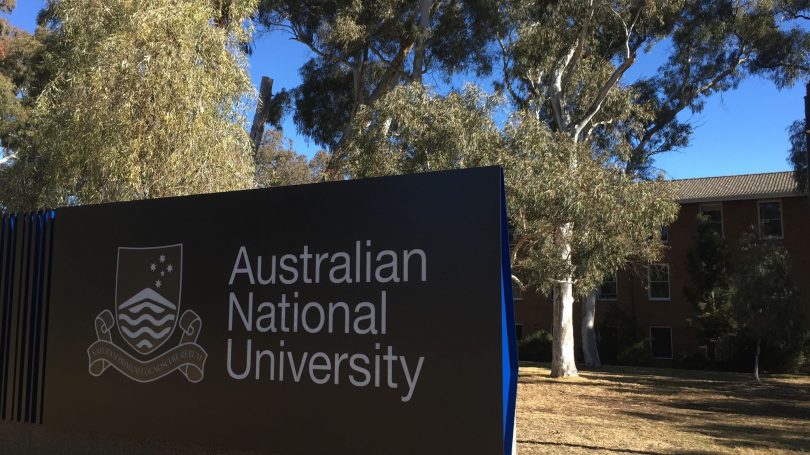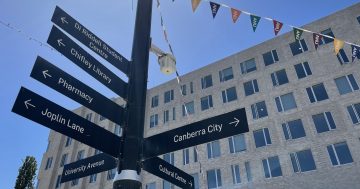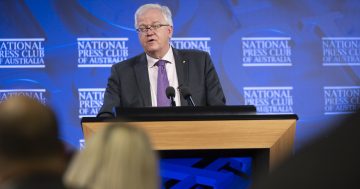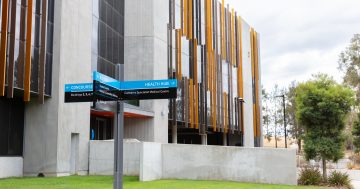
ANU has flagged staff cuts, pay freezes and voluntary redundancies as it tries to make up a $225 million shortfall due to COVID-19. Photo: Region Media.
The Australian National University (ANU) will reduce its use of casual staff, pursue voluntary redundancies and limit the renewal of fixed-term contracts as it struggles with a $225 million shortfall because of COVID-19.
In a letter to staff, Vice-Chancellor Professor Brian Schmidt said “unforeseen costs” of the pandemic, plus damage from January’s hailstorm in Canberra, and bushfire smoke that forced the campus to close during the past summer, would mean revenue has to be made up elsewhere.
With ANU spending $100 million on salary and operating costs each month, staff have been told to brace for cuts and redundancies.
“Concurrent with these unforeseen expenses, the university will earn less income than anticipated,” said Professor Schmidt. “Based on current projections and our best assessments of next semester, we expect a reduction to our budget of $125 million in tuition fees and $25 million in other revenue such as commercial activities on campus.
“Reducing our expenditure will be difficult and it is something everyone will need to contribute to. It will involve forgoing some of the conveniences we have enjoyed in recent years when the university’s financial position was very strong, and considering structural changes to parts of ANU.
“It will also involve reducing our salary bill. This means making hard decisions about fixed-term contracts, reducing our use of casual staff, and pursuing voluntary separations.”
Staff are also being asked to vote to defer their scheduled two per cent pay rise in July this year, which will save the University $6.75 million for six months and $13.5 million for 12 months, said Professor Schmidt.
“Should the majority staff vote in favour of deferring the pay rise, your wage will remain the same as it is now, with the two per cent increases scheduled for July 2020 and 2021, deferred for 12 months each,” he said.
“By and large I have been told people want to defer their pay rise, although I note concern for our lowest paid members of staff.
“Many senior staff have offered to forego their salary increase to allow their junior colleagues to keep theirs – this is the embodiment of ANU spirit at its best – although this is not easily feasible in the short-term.”

ANU Vice-Chancellor Professor Brian Schmidt said it is critical the university takes steps to reduce expenditure to maintain its financial health. Photo: Supplied.
The University of Canberra (UC) is also struggling with its budget and will use redundancies as a last resort as it implements a three-stage approach to cost cutting.
“The revenue loss to the university for 2020 alone will be in the order of $33 million,” said a UC spokesperson.
“However, the pipeline effect of lower student numbers and continued international student travel bans could see a doubling of this revenue loss to around $60 million in 2021. While 2020 is proving to be a tough year, the biggest financial impacts will be felt in 2021 and beyond.
“The university has implemented a three-phase approach to reduce costs. This involves scrutinising all cost centres, freezing recruitment, encouraging and, if necessary, directing staff to take leave. Moving to each phase will depend on the level of savings made in each preceding stage. By taking an incremental approach, we are doing all we can to avoid making workforce reductions.”
ANU will also defer some construction work and maintenance upgrades, which will reduce planned expenditure by $100 million, and continue its hiring freeze to help its short-term cash position, said Professor Schmidt.
“We made the decision to proceed with some ongoing capital works because delaying them is more expensive due to contractual obligations and the cost of partially completed buildings,” he said.
“While I cannot put an exact figure on it, the pause on recruitment has also helped reduce our costs.”


















